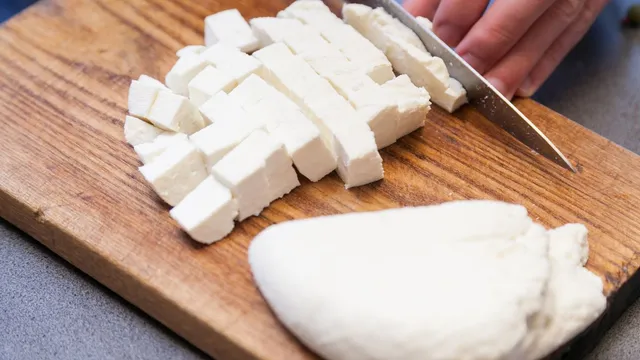- By Iram Hussain
- Wed, 18 Dec 2024 12:22 PM (IST)
- Source:JND
Paneer, a famous dairy food item is widely consumed globally. This Indian cheese is an excellent source of protein which makes it a staple for vegetarians. Rich in nutrients, paneer boasts a high protein content along with essential amino acids, vitamins B12 and D and minerals like calcium and phosphorus. Its nutrient-dense profile makes paneer an ideal choice for those seeking to meet their daily protein requirements. With its versatility in various dishes, from curries to desserts, paneer has become a beloved ingredient in many cuisines, offering a delicious and healthy option for those seeking a balanced diet.
However, food adulteration is a common practice that raises concerns while purchasing. The market is flooded with synthetic paneer, often adulterated with harmful ingredients like caustic soda, detergent and artificial preservatives. These counterfeit products can cause serious health issues including digestive problems and kidney damage. Thus, here we've compiled some easy ways that will help you identify fake paneer at home.
Ways To Identify Fake Paneer
Use Hands
To identify adulterated paneer, use your bare and dry hands. Pure paneer can withstand pressure but adulterated paneer, often mixed with skimmed milk will crumble or fall apart when pressed. Squeeze the paneer gently, if it breaks or disintegrates, it may be impure.
Dal Test
To spot fake paneer, use arhar dal. Boil paneer in water, cool it down and then add tur dal powder. Wait for at least 10 minutes. If it changes its colour and turns red, then it indicates its adulteration with urea or detergent. This simple test helps detect artificial additives, ensuring your paneer is pure and safe for consumption.
Taste
One of the simplest ways to test the adulteration in paneer is by tasting it. Pure paneer has a mild flavour and creamy texture. If it tastes chewy, sour or bitter, it may be artificial. Adulterated paneer can have a soapy or metallic taste. Be cautious if it's overly soft or crumbly as it may mixed with harmful products like urea, detergent or starch.
-1734504293461.jpg)
Simple ways to check the purity of paneer (Image Credits: Canva)
Water Test
The water test is another way to check paneer's purity. Place a piece of paneer in a bowl of water. If it sinks and stays intact, it's pure. But if it starts to dissolve, disintegrate or break apart, it's likely adulterated. Unadulterated paneer will maintain its shape and texture while synthetic or fake paneer will lose its form, indicating the presence of artificial additives.
Heat Test
When heating the paneer, try to observe its behaviour. Pure paneer will not release excess oil or residue when melted. Instead, it will retain its creamy texture. However, if it releases excess oil or leaves a residue, it's likely to be adulterated with added fats and oils. Pure paneer's natural moisture content evaporates during heating whereas adulterated paneer's added oils separate while indicating impurities.
ALSO READ: How To Identify Adulterated Wheat Flour? Try These 4 Easy Tests
ALSO READ: How To Check If Your Honey Is Pure? Try These 5 Easy Tests At Home

